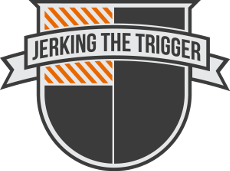A-TACs camo is a new “universal” camo pattern that was first displayed at SHOT Show 2010. Universal camo patterns are designed to work well across a variety of different environments. A-TACS is essentially designed to perform the same role as patterns like Multicam or UCP.

Click image to visit the A-TACs website.
It brings a few new and unique ideas to the table that make it noteworthy. It seeks to correct the flaws in modern digital camo patterns (like UCP, MARPAT, CADPAT) as perceived by the A-TACS designers. From the A-TACS “About” Page:
- Replace un-natural square pixels with organic pixels. Utilizing our patented process, we created a palette of natural colors digitally sampled from real-world elements in carefully controlled lighting. The pattern is then created using a mathematical algorithm that writes “organically-shaped” pixels using the specific color information given. The resulting pattern while still digital, is far more organic in appearance.
- Use small patterns to create larger more distinct shapes designed to work at a distance. Small shapes create larger shapes and larger shapes are organized into a distinct pattern with no horizontal or vertical orientation. This unique “pattern within a pattern” concept allows A-TACS® to effectively break the human outline at great distances thereby, minimizing the “blobbing” effect of other patterns when viewed from a distance.
- More effective use of color-range produces a better concealment system. A-TACS® is created using a far greater range of inter-mingled natural colors than was previously possible. The overall base color for the cast is a neutral tan which is designed for use in open, rocky or arid environments.
It is noteworthy that so many vendors were supporting the launch of A-TACS at SHOT Show. It seemed to be in every booth on everything from rifles, to clothing, to tactical gear. Some of the vendors include Remington, Blue Force Gear, Danner, Bushmaster, and Emerson Knives. This pattern appears to have a lot of momentum right out of the gate.
I am impressed with the pattern in the pictures that I have seen. However, pictures will not tell the full story since they are usually taken against backgrounds that are hand picked to show case the pattern. One thing that does stand out regardless of the background is how well the larger and smaller shape mix in order to break up the outline of the wearer. It does seem to be quite visually disruptive. The current color scheme seems to favor urban or rocky environments, though the designers say that they can customize the color scheme for any environment.
A-TACS is certainly worth keeping an eye on. Hopefully we will have more real world pictures and data soon.
More info:
A-TACS Gallery
Coverage on Soldier Systems Blog
Coverage on The Firearm Blog




